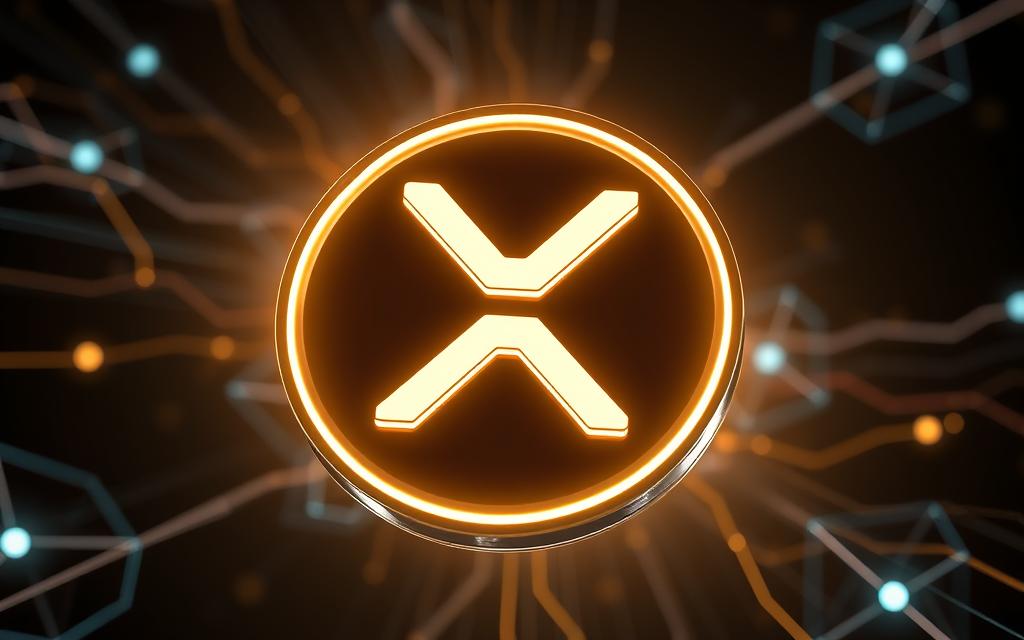Ripple’s XRP is revolutionizing the financial technology space with its unique features and capabilities. Launched in 2013 by OpenLabs, now known as Ripple, XRP is a cryptocurrency designed to bridge the gap between traditional finance and the crypto world.
Unlike other cryptocurrencies that aim to replace traditional banking systems, XRP was designed to work in harmony with existing financial infrastructure. Its ability to settle transactions within seconds, coupled with minimal fees, positions XRP as a potential game-changer. The XRP Ledger uses a consensus protocol that requires less energy and time to validate transactions, making it an attractive option for cross-border payments and remittances.
As Ripple continues to partner with financial institutions and expand its use cases, the future of XRP looks promising. With its unique consensus protocol and growing adoption, XRP is poised to make a significant impact in the crypto space.
What Is XRP Crypto and How Does It Differ From Other Cryptocurrencies?
Understanding XRP requires delving into its unique technological underpinnings and how it stands apart in the crowded cryptocurrency landscape. At its core, XRP is the native cryptocurrency of the Ripple network, a decentralized platform designed to facilitate fast and efficient cross-border payments.
The Basics of XRP and the Ripple Network
The Ripple network operates differently from other cryptocurrencies, primarily in its consensus mechanism. Unlike Bitcoin or Ethereum, which rely on energy-intensive mining to validate transactions, XRP uses a consensus protocol through a network of trusted validators. This approach not only reduces energy consumption but also significantly speeds up transaction processing times.
XRP vs. Traditional Cryptocurrencies: Key Differences
Several key differences set XRP apart from traditional cryptocurrencies:
- XRP’s consensus mechanism eliminates the need for mining, reducing both energy consumption and the time required for transaction validation.
- Transaction times are drastically faster, settling in 3-5 seconds compared to 10-60 minutes for Bitcoin.
- The XRP Ledger was pre-mined with 100 billion XRP tokens, contrasting with Bitcoin’s capped supply of 21 million coins through continuous mining.
- While traditional cryptocurrencies often operate on public blockchains with complete decentralization, XRP’s network relies on a list of trusted validators, which can be seen as more centralized.
- XRP is primarily used for facilitating cross-border payments and serving as a bridge currency, differing from many other cryptocurrencies that focus on being a store of value or smart contract platform.
| Feature | XRP | Bitcoin |
|---|---|---|
| Consensus Mechanism | Consensus Protocol | Proof of Work (Mining) |
| Transaction Time | 3-5 seconds | 10-60 minutes |
| Total Supply | 100 billion | 21 million |
The Origin Story: Ripple’s Journey From Concept to Reality
Ripple’s journey to becoming a significant player in the cryptocurrency space began with a vision to transform the financial industry. The company’s early days were marked by significant milestones that shaped its future.
The Early Days: From RipplePay to OpenCoin
In 2012, RipplePay was the first iteration of what would become the Ripple network. A year later, in 2013, OpenCoin officially launched XRP as the native digital asset of the Ripple network, marking a significant milestone in the company’s development. This move laid the foundation for the evolution of Ripple’s technology and its digital asset, XRP.
Evolution Into Today’s Ripple and XRP Ecosystem
Throughout its development, Ripple has secured significant funding and formed strategic partnerships with financial institutions, helping to legitimize both the company and XRP in traditional finance. In 2015, the company rebranded from Ripple Labs Inc. to Ripple, reflecting its more focused mission in the financial technology space. The XRP Ledger has undergone multiple updates, with version 1.6 introducing significant performance enhancements and security features, further solidifying Ripple’s position in the market.
- The launch of XRP in 2013 was a crucial step in Ripple’s development.
- Ripple’s rebranding in 2015 marked a new era for the company.
- The XRP Ledger’s updates have improved the network’s performance and security.
Inside the Technology: How XRP Works
Understanding how XRP works requires a dive into its unique technological framework. At its core, XRP operates on a decentralized, open-source ledger called the XRP Ledger.
The XRP Ledger and Consensus Protocol
The XRP Ledger is a critical component that enables the Ripple network to process transactions efficiently. Unlike traditional blockchain-based cryptocurrencies that rely on mining, XRP uses a consensus protocol to validate transactions. This approach significantly reduces energy consumption and allows for faster transaction processing times.
Transaction Validation Without Mining
XRP’s transaction validation process is fundamentally different from that of Bitcoin and other Proof-of-Work cryptocurrencies. Instead of miners competing to solve complex mathematical problems, XRP transactions are validated by designated servers that reach a consensus through a voting process. This method enables the XRP network to process approximately 1,500 transactions per second, far surpassing the capacity of traditional cryptocurrencies.
| Feature | XRP | Bitcoin |
|---|---|---|
| Transaction Validation | Consensus Protocol | Proof-of-Work Mining |
| Transactions Per Second | 1,500 | 7 |
| Energy Consumption | Significantly Lower | High |
Speed, Cost, and Efficiency: XRP’s Competitive Edge
XRP’s competitive edge in the cryptocurrency market is largely attributed to its speed, cost-effectiveness, and efficiency. This edge is primarily due to its advanced technology and the unique characteristics of the XRP Ledger.
Transaction Speed: Settling in Seconds
The XRP Ledger enables fast transaction settlement in a matter of seconds, outpacing many traditional payment systems and other cryptocurrencies. This rapid settlement is crucial for applications requiring immediate transaction finality, such as cross-border payments and remittances. With the ability to process transactions at this speed, XRP provides a highly efficient solution for financial institutions and individuals alike.
Minimal Transaction Fees and Energy Consumption
XRP transactions are characterized by remarkably low fees, with a default transaction fee of 0.00001 XRP, equivalent to a fraction of a cent. This low cost, combined with the energy-efficient consensus mechanism of the XRP Ledger, makes it an attractive option for both financial institutions and individuals. The list of benefits includes:
- Low transaction fees that remain constant regardless of the transaction amount.
- Minimal energy consumption compared to Proof-of-Work systems like Bitcoin.
- A highly efficient payment system that processes transactions at a fraction of the cost of traditional banking networks.
Ripple and the Banking Revolution
Ripple is transforming the banking sector with its innovative blockchain technology. By leveraging XRP, Ripple addresses one of the most significant challenges in international banking: providing liquidity for cross-border payments without pre-funding accounts in destination currencies.
How Financial Institutions Are Using XRP
Financial institutions are utilizing XRP through Ripple’s On-Demand Liquidity (ODL) solution. This product allows banks to settle international transactions instantly, reducing the need for large foreign currency reserves and increasing capital efficiency.
On-Demand Liquidity: Solving Cross-Border Payment Challenges
ODL works by converting the sending currency to XRP, transferring it across borders in seconds, and then converting to the destination currency. This process eliminates the need for pre-funded nostro accounts, freeing up billions of dollars that can be used more productively. Several financial institutions and payment providers have already implemented ODL, reporting significant reductions in operational costs.
XRP Use Cases Beyond Banking
XRP’s versatility extends far beyond the banking sector, offering a wide range of use cases that leverage its speed and efficiency. As the cryptocurrency landscape continues to evolve, the potential applications of XRP are becoming increasingly diverse.
International Remittances and Micropayments
One of the significant cases for XRP is in international remittances and micropayments. With its ability to facilitate fast and low-cost transactions, XRP is an attractive solution for individuals and businesses looking to transfer funds across borders. This application is particularly relevant in regions where traditional remittance services are costly and inefficient.
Ripple Xpring: Expanding XRP’s Ecosystem
Ripple Xpring, now evolved into RippleX, is an ecosystem initiative aimed at investing in, incubating, and providing grants to projects that utilize XRP and the XRP Ledger. Through this program, Ripple has supported numerous startups working on innovative applications, including gaming, digital media, and decentralized finance. By fostering this broader ecosystem, Ripple is working to establish XRP as a versatile crypto asset with utility beyond its original payment-focused use cases.
The investments made through RippleX are designed to expand the XRP ecosystem by encouraging developers to build applications that leverage XRP’s speed and low transaction costs for novel purposes. This includes platforms for tokenizing real-world assets and decentralized exchanges using XRP as a base currency.
Challenges and Controversies: The SEC Case and Centralization Concerns
XRP’s journey has not been without controversy, as it navigates the complex landscape of cryptocurrency regulations and decentralization concerns. Despite its potential, the cryptocurrency faces significant challenges that impact its adoption and perception in the financial market.
The Securities and Exchange Commission Lawsuit
The SEC lawsuit has been a significant hurdle for XRP, raising questions about its classification as a security. Critics argue that Ripple’s significant holdings of XRP, approximately 55 billion tokens held in escrow, indicate centralized control. This has led to concerns among investors and users about the implications of the lawsuit on XRP’s value and usability. As Ripple continues to navigate this legal challenge, the outcome remains uncertain, potentially influencing the broader cryptocurrency landscape.
Addressing Criticisms of Centralization
Criticism of XRP’s centralization stems from Ripple’s control over a significant portion of the XRP Ledger. However, Ripple has taken steps to address these concerns. The company has placed the majority of its XRP holdings in cryptographically secured escrow accounts with a controlled release schedule. Additionally, Ripple has worked to increase the diversity of validators on the XRP Ledger, with Ripple-operated validators now representing less than 20% of all validators on the network. This move towards greater decentralization aims to alleviate concerns and foster a more robust ecosystem for XRP and its users within financial institutions.
As the cryptocurrency landscape continues to evolve, the ability of XRP and Ripple to address these challenges will be crucial. The institutions that adopt XRP will be watching closely, and the outcome may have significant implications for the crypto market.
The Future of XRP in the Global Financial Landscape
The trajectory of XRP’s value and its integration into financial systems will be influenced by several key factors, including the resolution of the SEC lawsuit.
A positive ruling could legitimize XRP as a compliant digital currency, while a negative outcome may restrict its use in major markets.
The growing adoption of blockchain technology by traditional financial institutions could accelerate XRP’s integration into the global payment infrastructure, offering more efficient solutions for cross-border transactions.
However, competition from other cryptocurrencies and emerging fintech solutions will continue to challenge XRP’s value proposition.
In the long term, XRP’s success will depend on its ability to deliver measurable improvements in transaction costs, speed, and reliability for institutions while navigating a complex regulatory environment across different global jurisdictions.




















